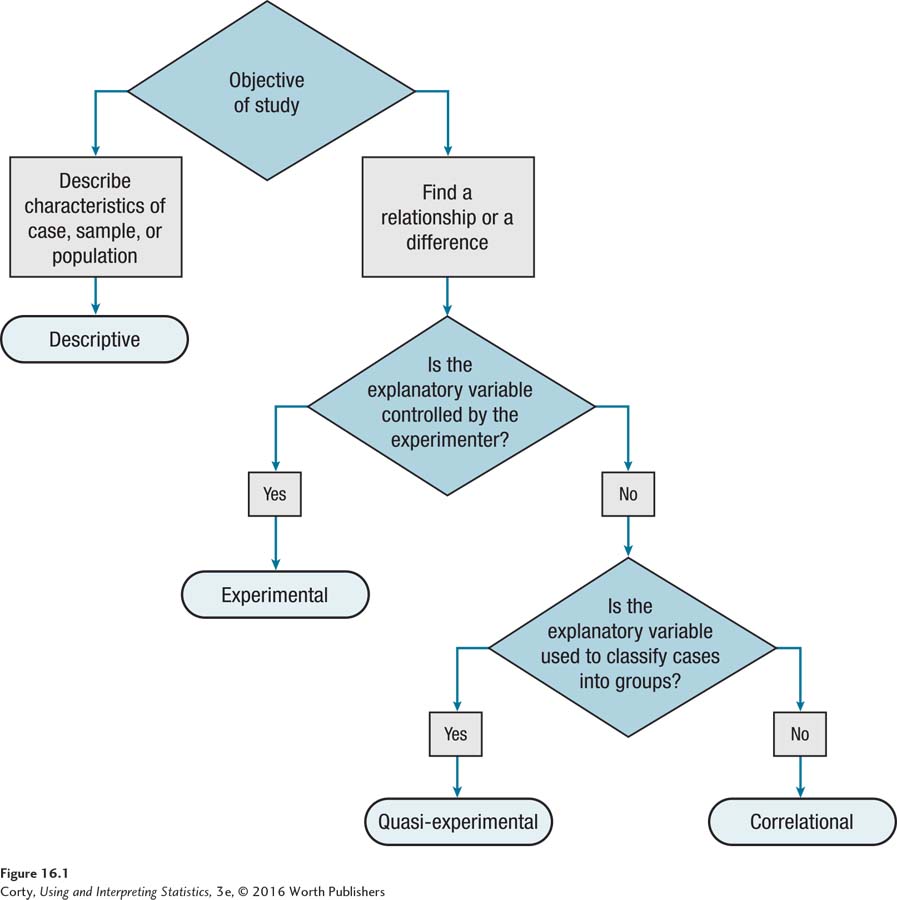16.1 Review of Statistical Tasks
The tool that the statistician selects depends on the task, and there are three different types of tasks:
Summarizing a set of data
Deciding if a group of cases differs from another group of cases on some underlying parameter
Determining if two variables vary together systematically
The first type of task involves what are called descriptive statistics, statistics used to describe a set of observations. Reporting that the average length of stay in a psychiatric hospital is two weeks is an example of a descriptive statistic.
The other two tasks for statisticians involve difference tests and relationship tests. Difference tests look for differences in some underlying parameter among groups of cases. For example, reporting that it takes longer, on average, to treat someone for depression than for anxiety would be the result of a difference test. Relationship tests see if variables correlate. Finding that the longer a person has suffered from depression tends to increase the difficulty in treating it would be the result of a relationship test.
Chapter 1 covered three different types of studies—experimental designs, quasi-experimental designs, and correlational designs. Table 16.1 summarizes their similarities and differences. Knowing what type of study was conducted is important because different types of studies call for different statistics:
Descriptive studies call for the use of descriptive statistics.
Experimental designs and quasi-experimental designs divide participants into groups, so they are analyzed with difference tests.
Correlational designs, which measure two variables in a single sample of participants, call for relationship tests.

The flowchart in Figure 16.1 shows how to determine whether a study is experimental, quasi-experimental, or correlational, as well as whether it is descriptive.

The flowchart in Figure 16.1 may involve making a decision about the explanatory variable, often called the independent variable, in a study. Studies often have two variables, an explanatory variable and an outcome variable, commonly referred to, respectively, as the independent variable and the dependent variable. It is important to be able to tell which is which. The explanatory variable is the one used to assign or classify cases into groups or to predict the outcome, and the outcome variable is the one where the outcome of the study is measured.